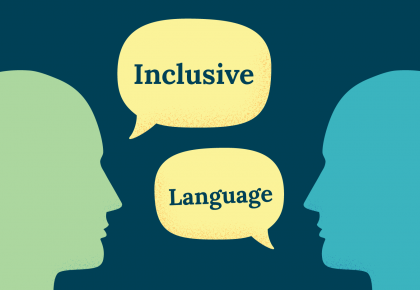Continuing the Conversation
What does it mean to be diverse? What do your diversity efforts entail? And perhaps most importantly, what is the business case for diversity and inclusion?
Our recent webinars focused on the current challenges and organizational solutions in diversity and inclusion and one main takeaway is that this is not a topic that fits neatly into a 60min webinar format. This is a conversation that must be continued for organizations and society as a whole to effect real change.
Join us in continuing the conversation where our speakers answer some of the many questions that were asked live and we invite you to keep asking questions on this topic. We invite you to leave comments, insights, and additional questions.
Question: I understand having a strategic approach to developing a sustainable D&I program, and that organizations should not just react to the social issue of the day, however, we are in a time of reckoning right now. What types of actions should a company take when these issues do confront us?
Answer: If your organization truly is pursuing diversity and inclusion broadly and compellingly, it should incorporate emerging flashpoints, such as through employee resource groups (ERGs), training and communications that address the breadth of diversity, internal systems that promote equity, and others. Every diversity and inclusion program must continue to evolve, partly pushed along by the social issues of the day, and this evolutionary effort should be built into the structure of the program and D&I staff competencies.
Question: What do you think could be done if – hypothetically – there’s a member of the senior leadership team who shows resistance to DEI initiatives?
Answer: This sounds like a good opportunity to test out the design of the D&I program by working to build a champion of it in this executive. If a compelling case can be made that engages the executive, it strengthens the overall opportunity. But, given that you’re likely to have only so much time and attention to make this case to the executive, it’s a good idea to test it on other executives friendlier to the program first to fine-tune in.
Question: Any recommendations for industries that are historically not considered diverse – specifically in attracting younger generations as a starting point to being more diverse?
Answer: It’s a matter of making the first step and showing progress. No major, enduring progress happens overnight. Another approach is to show examples of industries where D&I efforts have been successful at attracting a greater diversity of people to the industry’s business benefit. This should resonate with leadership.
Question: How can you accurately capture metrics around ‘inclusion’ within an organization whether empirically or qualitatively?
Answer: Perception data can be very compelling and informative, especially when it is inclusive of the broader workforce, and with some focus on historically marginalized groups, to provide greater confidence in the output.
Question: With the continued uncertainty of the election at hand how can one who is impacted by the Executive Order that impacts the federal government and contractors/grantees, move training forward in the best way under the constraints of the order?
Answer: In our reading, the Executive Order does not prohibit diversity and inclusion training, it merely contextualizes it. We believe there’s plenty of opportunity for valuable D&I training that fits the confines of the Order.
Question: One of the most challenging areas in my experience is generational, especially when it comes to the perception of age and ability, what do you recommend we consider as we look to address a future workforce where we may be more reliant on an aging workforce?
Answer: A generational employee resource group would be helpful, as would focus groups and training and communications that break the myths and stereotypes about generational differences. As with any D&I initiative, it’s about getting people to recognize and treat other staff as individuals.



